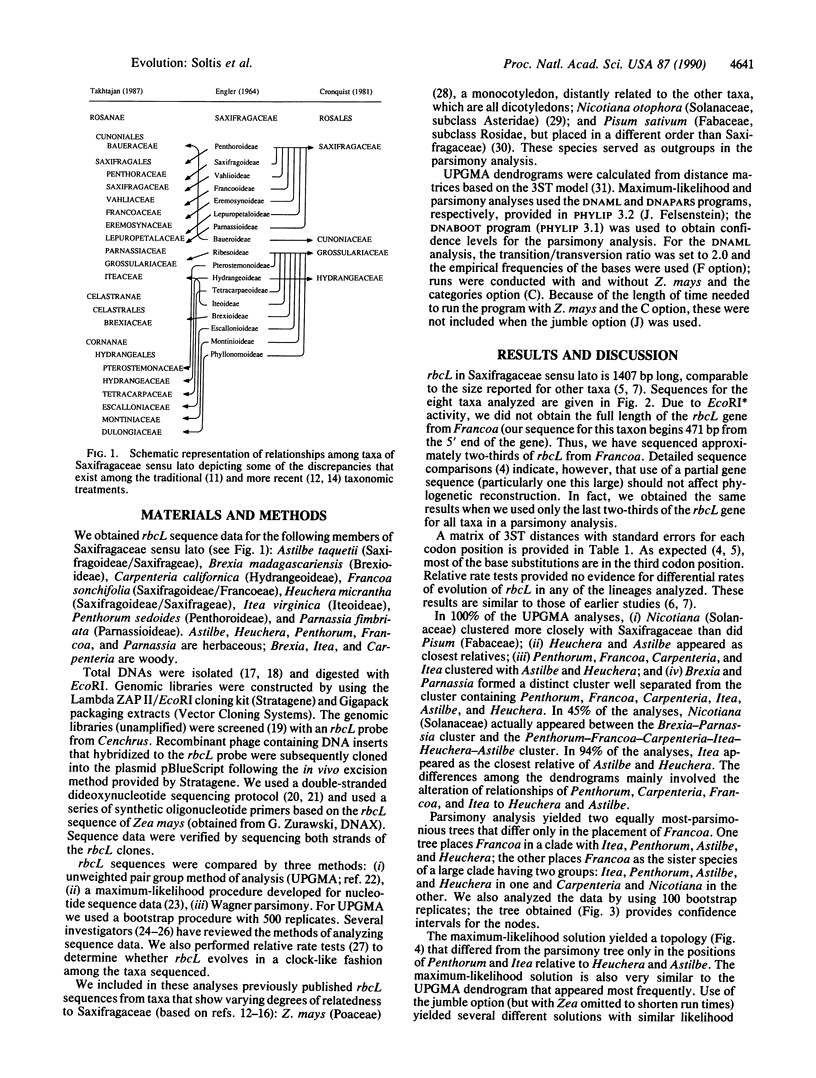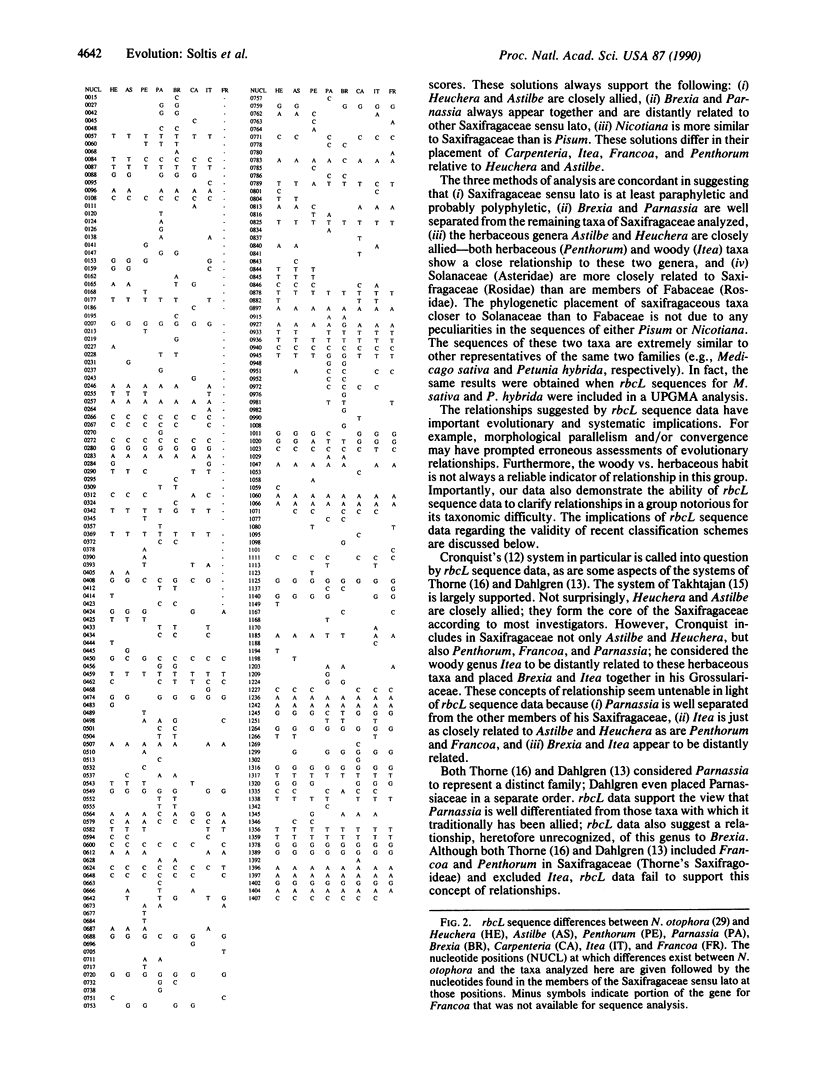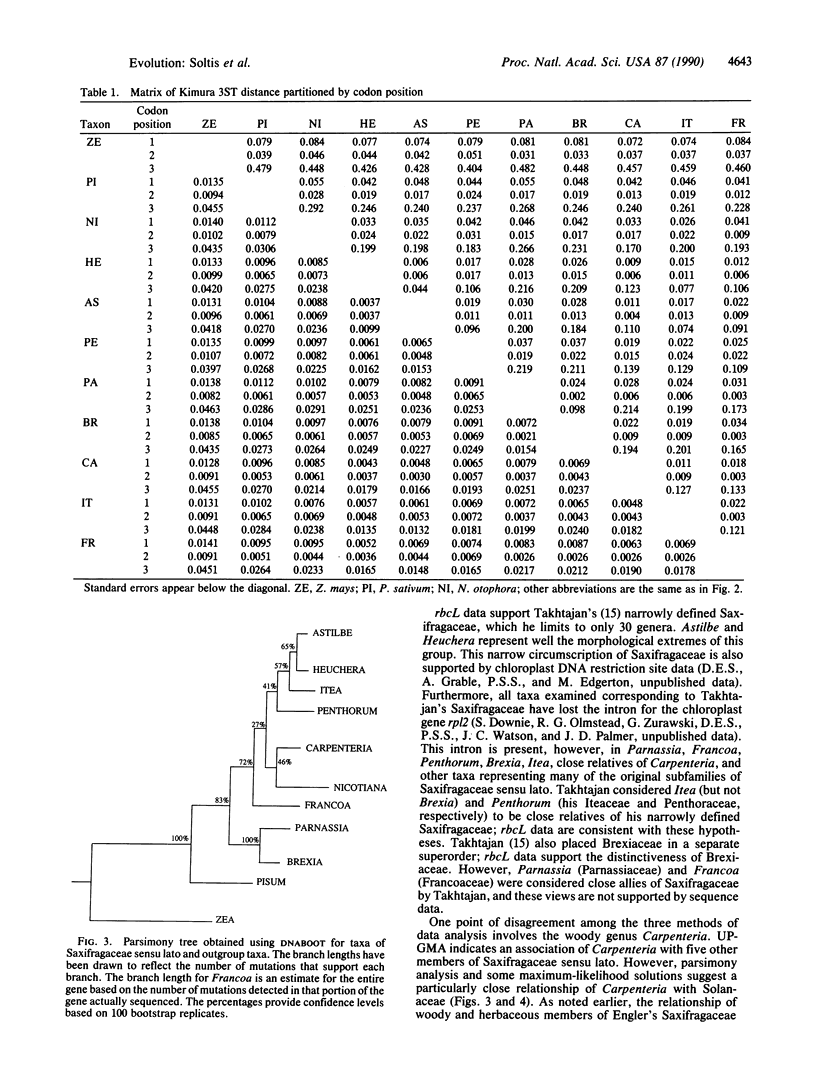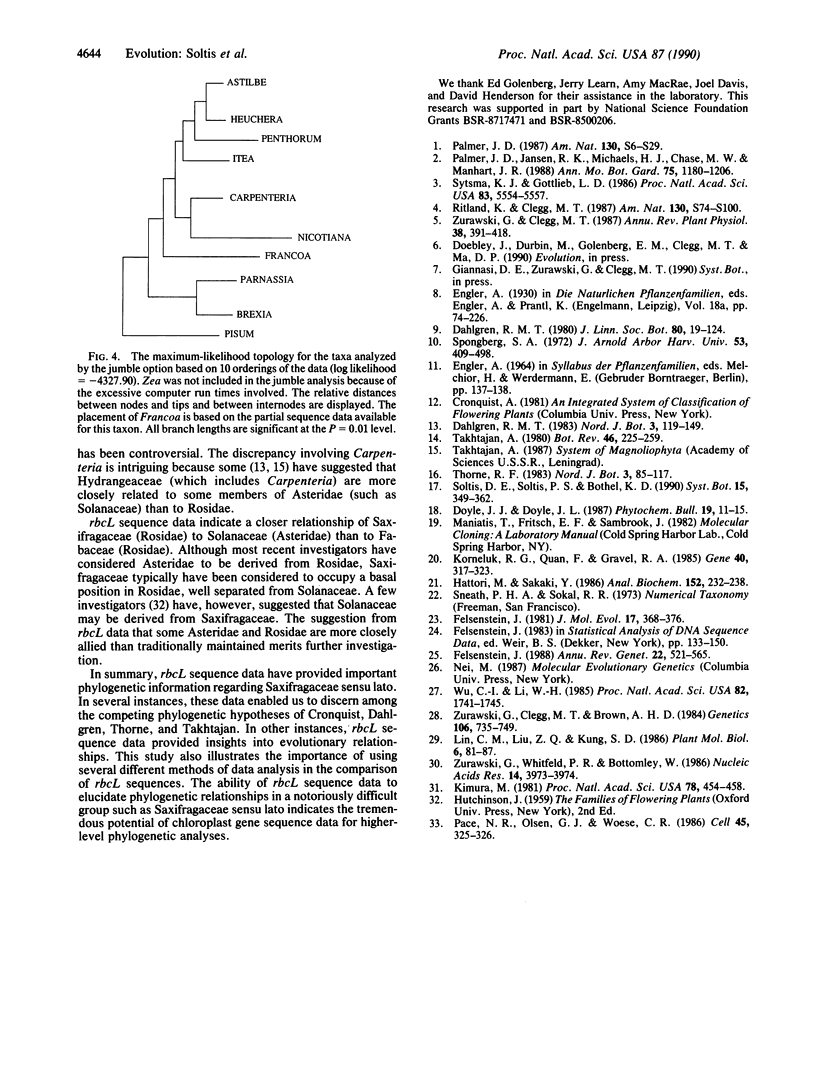Abstract
Phylogenetic relationships are often poorly understood at higher taxonomic levels (family and above) despite intensive morphological analysis. An excellent example is Saxifragaceae sensu lato, which represents one of the major phylogenetic problems in angiosperms at higher taxonomic levels. As originally defined, the family is a heterogeneous assemblage of herbaceous and woody taxa comprising 15 subfamilies. Although more recent classifications fundamentally modified this scheme, little agreement exists regarding the circumscription, taxonomic rank, or relationships of these subfamilies. The recurrent discrepancies in taxonomic treatments of the Saxifragaceae prompted an investigation of the power of chloroplast gene sequences to resolve phylogenetic relationships within this family and between the Saxifragaceae and other major plant lineages. Sequence data from the gene rbcL (ribulose-1,5-bisphosphate carboxylase, large subunit) reveal that (i) Saxifragaceae sensu lato is at least paraphyletic, and probably polyphyletic, (ii) the genera Parnassia and Brexia are only distantly related to other members of Saxifragaceae, and (iii) representatives of the Solanaceae (subclass Asteridae) appear more closely related to Saxifragaceae (subclass Rosidase) than traditionally maintained. These data illustrate the value of chloroplast gene sequence data in resolving genetic, and hence phylogenetic, relationships among members of the most taxonomically complex groups.
Full text
PDF




Selected References
These references are in PubMed. This may not be the complete list of references from this article.
- Felsenstein J. Evolutionary trees from DNA sequences: a maximum likelihood approach. J Mol Evol. 1981;17(6):368–376. doi: 10.1007/BF01734359. [DOI] [PubMed] [Google Scholar]
- Felsenstein J. Phylogenies from molecular sequences: inference and reliability. Annu Rev Genet. 1988;22:521–565. doi: 10.1146/annurev.ge.22.120188.002513. [DOI] [PubMed] [Google Scholar]
- Hattori M., Sakaki Y. Dideoxy sequencing method using denatured plasmid templates. Anal Biochem. 1986 Feb 1;152(2):232–238. doi: 10.1016/0003-2697(86)90403-3. [DOI] [PubMed] [Google Scholar]
- Kimura M. Estimation of evolutionary distances between homologous nucleotide sequences. Proc Natl Acad Sci U S A. 1981 Jan;78(1):454–458. doi: 10.1073/pnas.78.1.454. [DOI] [PMC free article] [PubMed] [Google Scholar]
- Korneluk R. G., Quan F., Gravel R. A. Rapid and reliable dideoxy sequencing of double-stranded DNA. Gene. 1985;40(2-3):317–323. doi: 10.1016/0378-1119(85)90055-1. [DOI] [PubMed] [Google Scholar]
- Pace N. R., Olsen G. J., Woese C. R. Ribosomal RNA phylogeny and the primary lines of evolutionary descent. Cell. 1986 May 9;45(3):325–326. doi: 10.1016/0092-8674(86)90315-6. [DOI] [PubMed] [Google Scholar]
- Sytsma K. J., Gottlieb L. D. Chloroplast DNA evidence for the origin of the genus Heterogaura from a species of Clarkia (Onagraceae). Proc Natl Acad Sci U S A. 1986 Aug;83(15):5554–5557. doi: 10.1073/pnas.83.15.5554. [DOI] [PMC free article] [PubMed] [Google Scholar]
- Wu C. I., Li W. H. Evidence for higher rates of nucleotide substitution in rodents than in man. Proc Natl Acad Sci U S A. 1985 Mar;82(6):1741–1745. doi: 10.1073/pnas.82.6.1741. [DOI] [PMC free article] [PubMed] [Google Scholar]
- Zurawski G., Bottomley W., Whitfeld P. R. Sequence of the genes for the beta and epsilon subunits of ATP synthase from pea chloroplasts. Nucleic Acids Res. 1986 May 12;14(9):3974–3974. doi: 10.1093/nar/14.9.3974. [DOI] [PMC free article] [PubMed] [Google Scholar]
- Zurawski G., Clegg M. T., Brown A. H. The Nature of Nucleotide Sequence Divergence between Barley and Maize Chloroplast DNA. Genetics. 1984 Apr;106(4):735–749. doi: 10.1093/genetics/106.4.735. [DOI] [PMC free article] [PubMed] [Google Scholar]


